Cycling through the incoming Arctic blast: our top ten tips for winter riding
As the temperatures take a dramatic turn for the colder in the northern hemisphere, we share our winter riding tips to get you through the worst of the weather
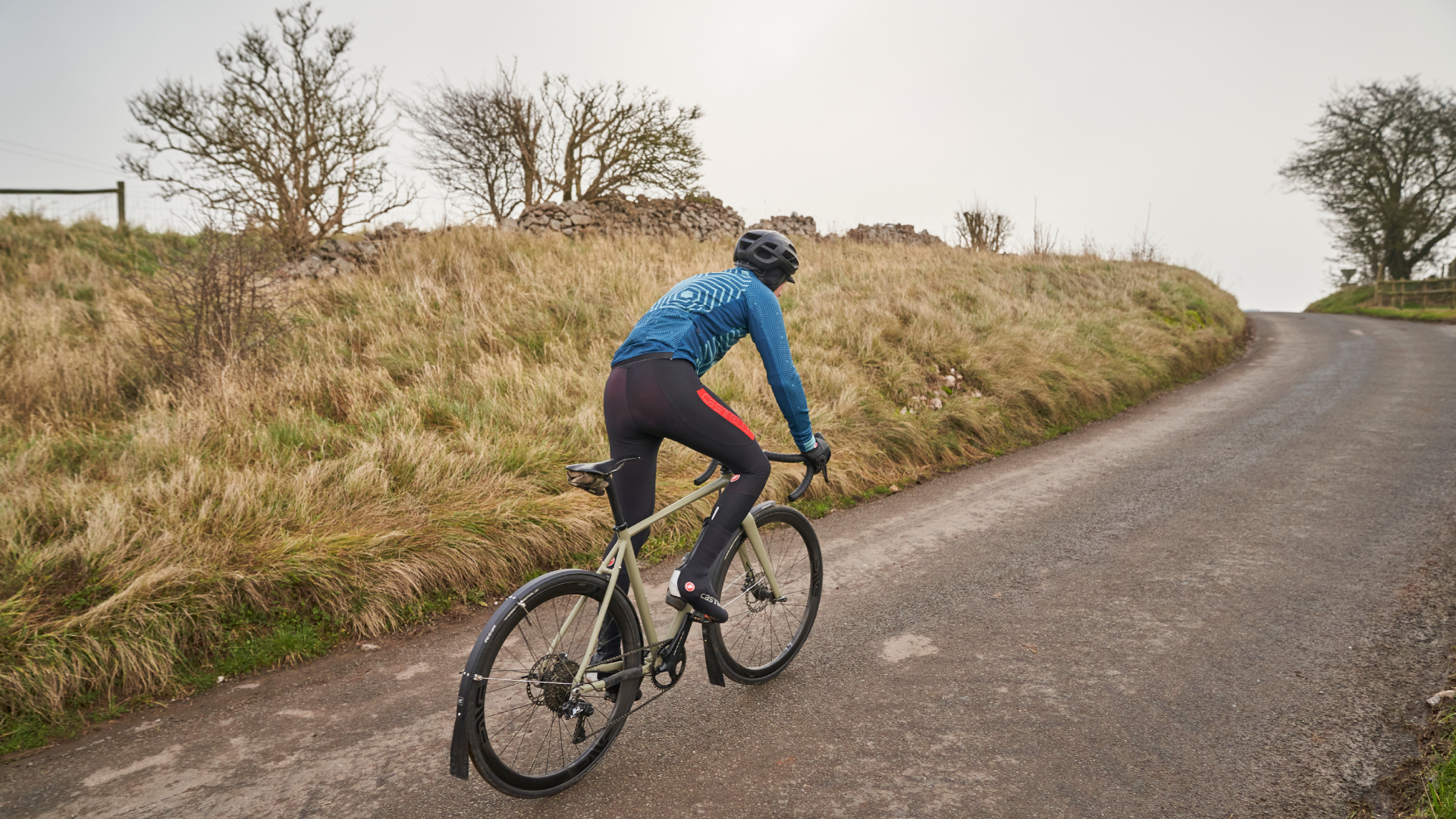

Cycling through winter can seen like a daunting idea, even for those who have ridden in the colder months many times before.
Although we'd admit that it's hard to beat cruising around in the summer, with short-sleeves and sunglasses, there's still a lot of enjoyment to be had from winter riding - let alone the benefits of keeping your legs turning, and a bit of (very) fresh air.
Here we outline 10 key points to consider when facing a winter of cycling...
1. Clothing
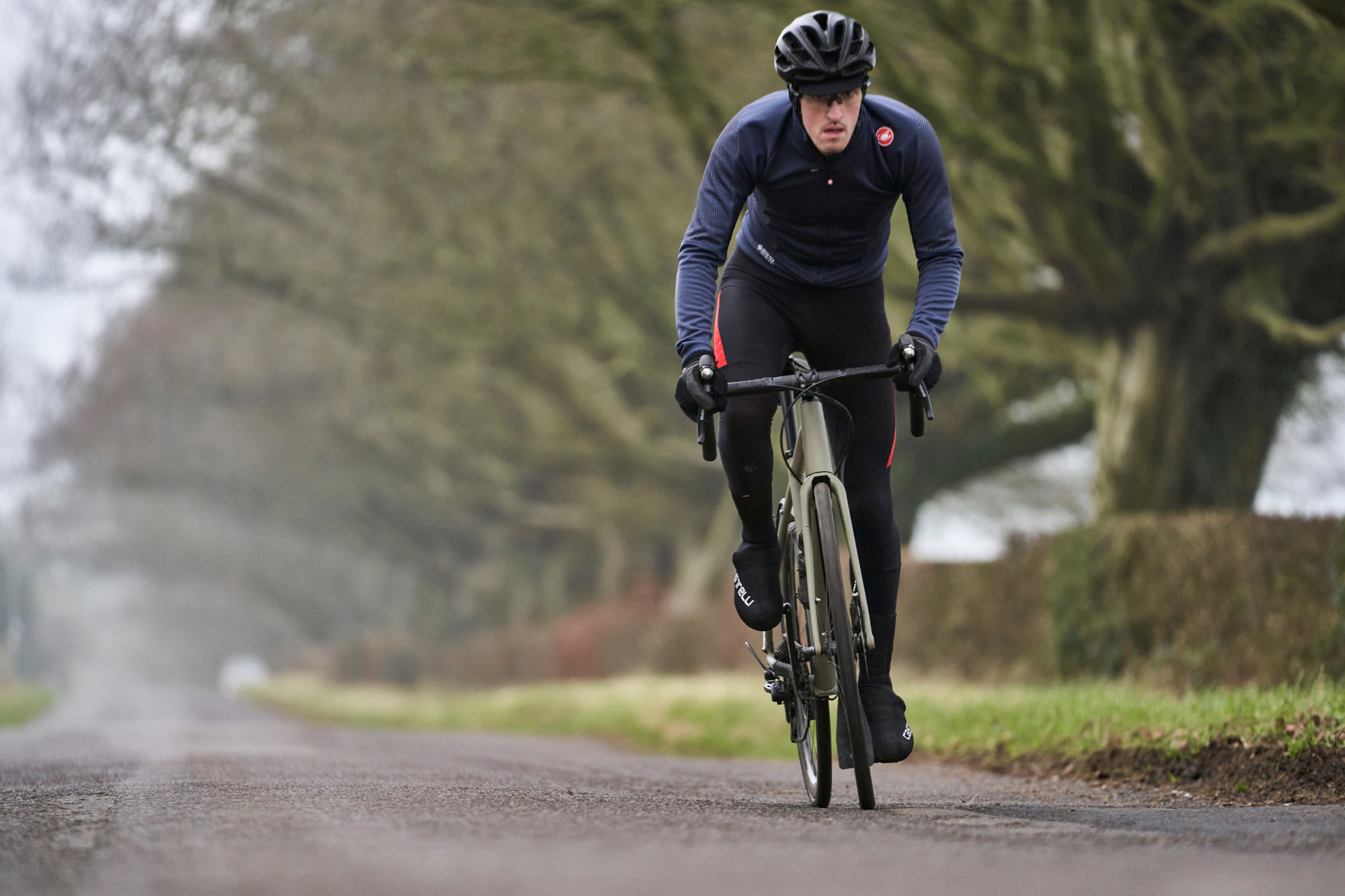
The most obvious and arguably important factor in winter weather riding is, of course, clothing. The right windproof, thermal and waterproof gear can keep you dry and warm on rides so that you barely notice how cold it is.
A full set of the best winter cycling clothing can at first seem like a large expense, but choosing carefully and layering up can give you a range of clothing to suit a range of temperatures.
There's a temptation to throw on thick fleeces and waterproofs to stave off the cold, but you also have to consider that they will make you sweat, even when the temperature is nudging zero. Sweat can accumulate under your clothes to make you feel wet, cold and clammy.
Use cycle-specific clothing as that for other sports may not have the correct fit for your position when riding, or the correct properties to keep you moisture-free.
Get The Leadout Newsletter
The latest race content, interviews, features, reviews and expert buying guides, direct to your inbox!
The best winter cycling gloves and overshoes will keep your extremities warm - these are the most susceptible areas to getting cold first.
Not sure whether you have enough clothes on (or too many)? Then go outside before your ride and see how it feels. Remember that the effort of riding will warm you up a bit.
Among the best sunglasses for cycling are clear or lightly tinted models, which are a good idea to keep spray and grit out of your eyes.
Winter clothing essentials: waterproof jacket, thermal bib tights, thermal/wicking cycling base layer, windproof cycling vest, cycling overshoes, windproof/thermal gloves and clear glasses
Winter clothing optional: thermal socks, under-helmet cap/headband,winter-specific cycling shoes/boots
2. Punctures
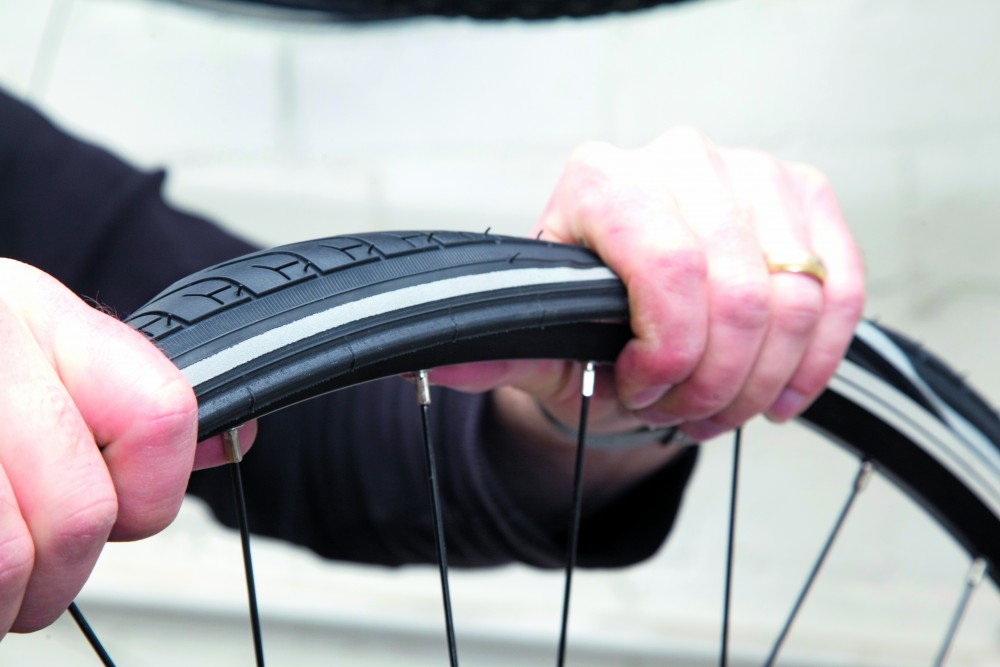
It's a sad fact that the worse the weather, the more likely you are to get a puncture. Wet road conditions create some kind of magical lubrication for thorns, shards of glass and sharp pieces of flint to stab their way through the carcass of your tire and into your inner tube.
Having to fix a bike puncture usually happens at the most inconvenient point of the ride.
Make sure that you have at least two tubes and a working bike pump - and you have to check that it works if you haven't used it for a while. Some people swear by the best CO2 cartridges to inflate their tires, but be aware that these run out after only one or two inflations.
In addition, when you operate them in low temperatures, the gas can cause the head of the canister to freeze, including to your gloves or fingers. We say this from bitter experience.
If you are riding in a group, make sure before you set out that between you, you have enough tubes and pumps. Don't rely on someone else having it all.
3. Food and drink
Eating enough before and during a ride is as important in winter as it is at any other time of year. Be aware that some of even the best energy bars for cycling can become very hard during low temperatures, so either keep them somewhere warm (eg a jersey back pocket) or opt for a softer product, such as the best energy gels.
Keep drinking regularly too. It may not be obvious that you are sweating under all that clothing, but fluid loss happens when cycling at any temperature.
If the temperature is really cold, then mix your drink with hot or warm water to stave off the chilling effect, at least for a while.
Of course, a café stop on Zone 2 endurance rides is even more essential during winter, giving you a chance to have a hot drink of coffee for a caffeine boost and a large slice of cake. Make sure you stay warm and don't cool off too much when you are stopped.
Ever wondered what causes café legs, that heavy feeling after a short break? Here we asked a cycling coach to explain what's going on in your body.
You can also find out more about nutrition for winter cycling, how to fuel off-season miles over here.
4. Lights
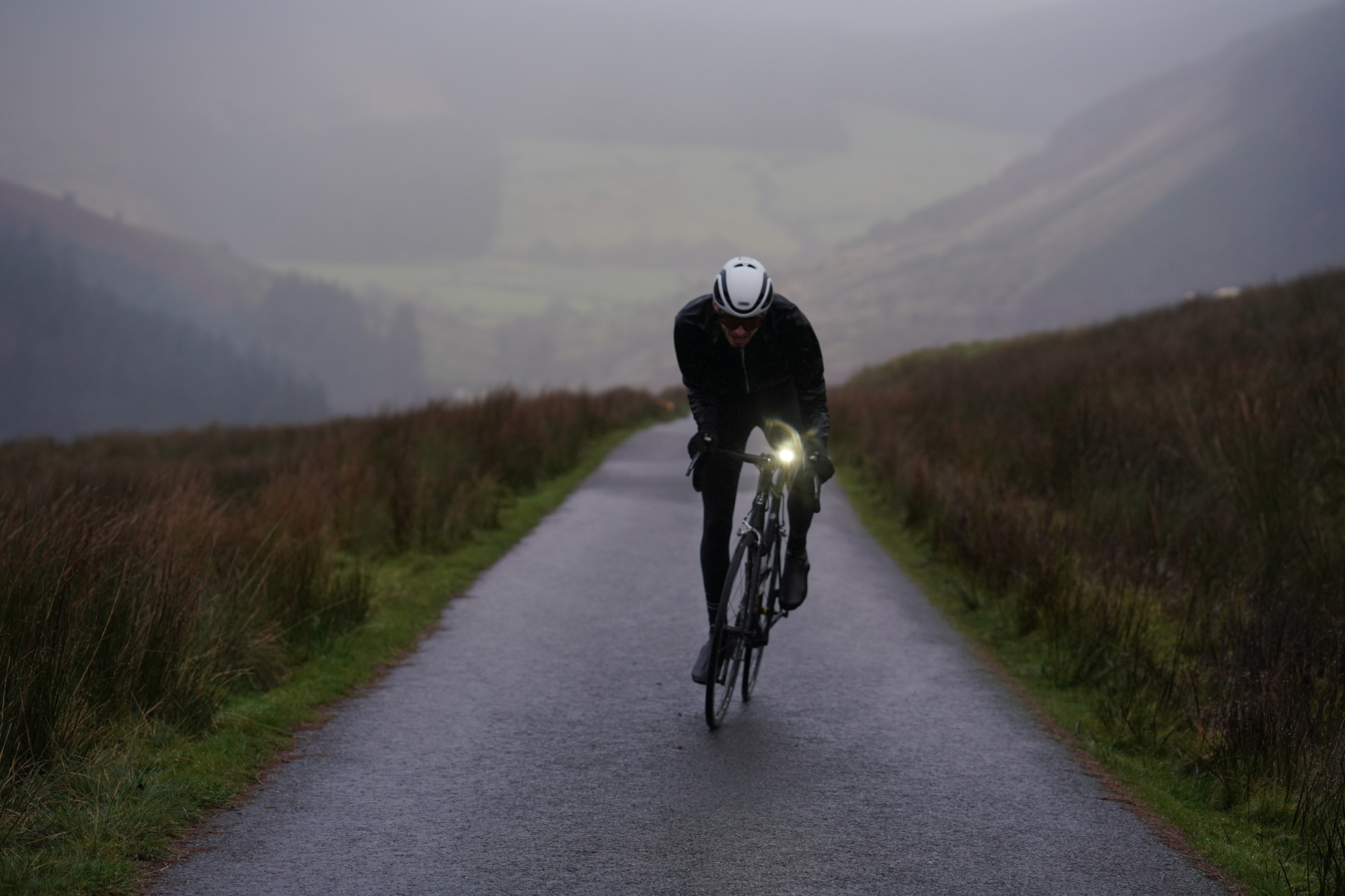
We're seeing more and more riders using lights all year round in daylight as a way of highlighting their presence to other road users. In winter, this is arguably more important as it can get very gloomy on overcast winter days when the sun is at its weakest.
Small, light and very bright rechargeable LED lights can be commonly found and among the best bike lights there are many quality options that won't break the bank.
Having lights with you at all times also relieves the worry that you will get caught in the dark during shorter days.
Make sure that your lights are charged (or you have fresh batteries) before every ride.
5. Tires
Teetering around damp, mucky lanes on your 25mm racing rubber is not the best idea for a number of reasons, not least the lack of grip and risk of slicing up expensive rubber.
We'd opt for tires that offer a degree of puncture protection and are harder wearing. Continental Gatorskins are a perennial favourite for winter riding, but many other tire manufacturers offer similar models - you can find our guide to the best winter tires for cycling here. They don't stop all punctures, but every little helps.
Tubeless tyres and the best puncture-proof tires are also an option, those these are currently slightly more expensive and more fiddly to install than regular tires and tubes.
6. Fenders / Mudguards
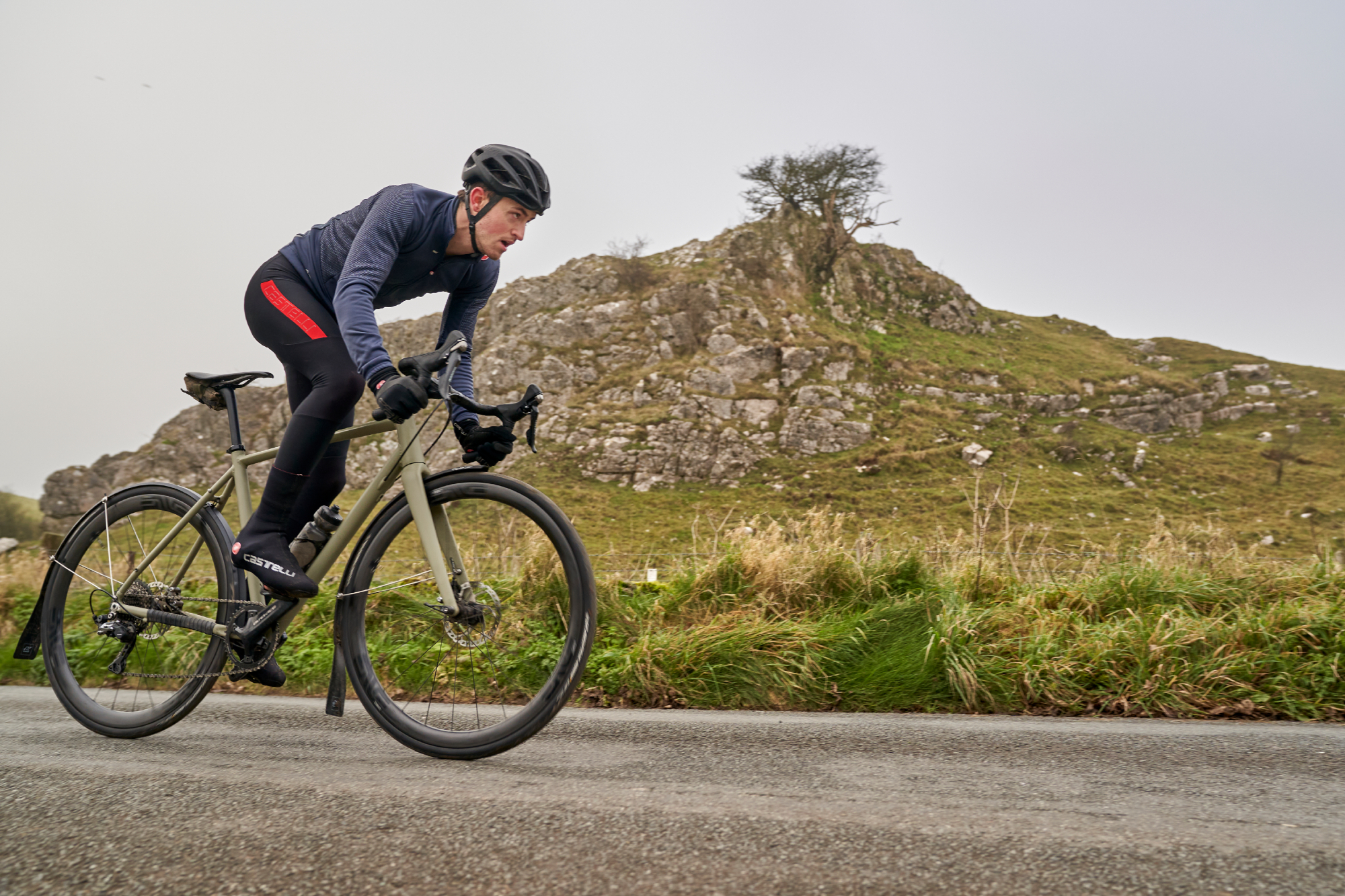
Use fenders / mudguards - your backside and the rider behind will thanks you for it
Anyone who goes cycling on a group ride knows that fenders / mudguards are a must in the winter. The spray and grunge kicked up as you ride along can land directly into your face, waterbottle, up your back and soak your backside in a highly uncomfortable way - the best bike fenders / mudguards, whether that's a mounted or clip-on design, will help you avoid this for the benefit of yourself and your riding buddies.
Anyone who has ever tried to ride directly behind someone who doesn't have fenders / mudguards in the wet will know exactly how much water is sprayed up by a rotating bike tire.
7. Maintenance
You should keep your bike in tip-top condition at all times, of course, but in winter you'll need to pay particular attention to moving parts, such as your chain, gears, cables, hubs and bottom bracket.
Give your bike a regular look over, and try and wash off the accumulated grime regularly. Check for wear on rims and brake blocks, as wet weather can be particularly harsh on these areas.
Keep your chain oiled regularly, and make sure that your cables are in good shape. Salty water off gritted roads can play havoc with components, and water getting into exposed cables can cause havoc with shifting.
By keeping on top of your bike's maintenance you can minimise the number of mechanical mishaps you may have when out riding. The last thing you want is to find yourself stranded at the side of a very cold road.
Find our guide on how to clean your bike over here.
8. Winter bike
As winter can be harsh on bikes, some people keep a specific bike just for winter. Usually, they are equipped with cheaper parts, fendees /mudguards, wider tires and lights, and perhaps have lower gears to cope with a slower winter pace.
Many keep hold of an old bike when they buy a new one, and turn it into a winter machine. Others will go out and specifically buy a bike for the purpose: cyclocross bikes are popular as winter bikes, as are cheaper aluminium-framed road bikes, hybrids and mountain bikes with slicks.
Your winter bike may be heavy, and you can reasonably expect to see your average speed drop, but you'll be flying when you switch back to your 'best' bike in the spring.
If you can afford a winter bike, we'd say go for it. Otherwise, 'winterise' your regular bike by following these five easy ways to increase comfort and minimise wear.
9. Be prepared
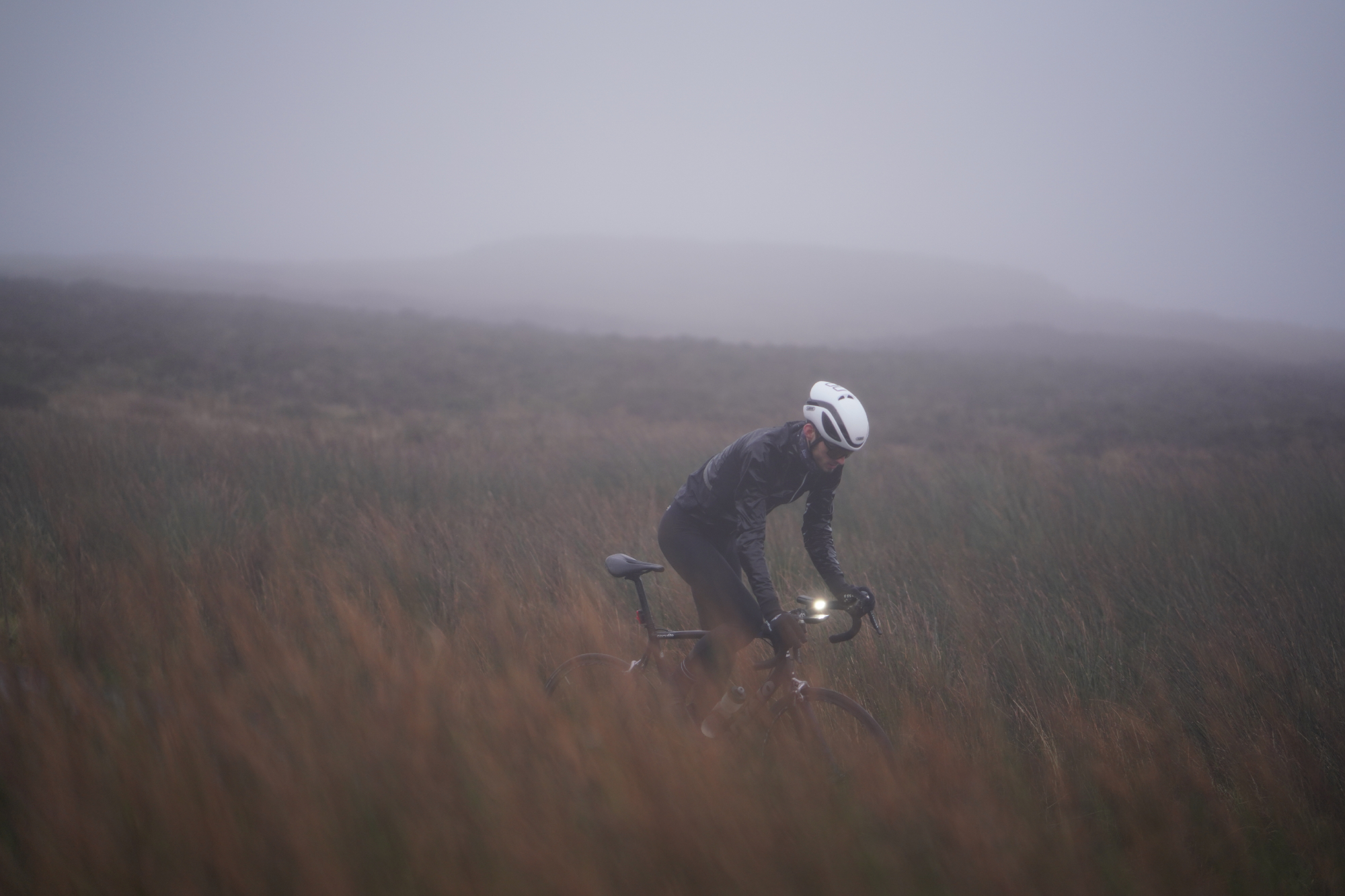
You may have specific requirements for the ride you are going on. Make sure you plan a sensible route to match the predicted weather forecast, take a (charged) phone with you, some money in case of emergencies and take heed of the advice listed above.
Think of the worst possibility and be prepared - within reason... we don't recommend towing a workstand or oil-filled radiator around with you.
10. If all else fails... stay in and get on the turbo trainer
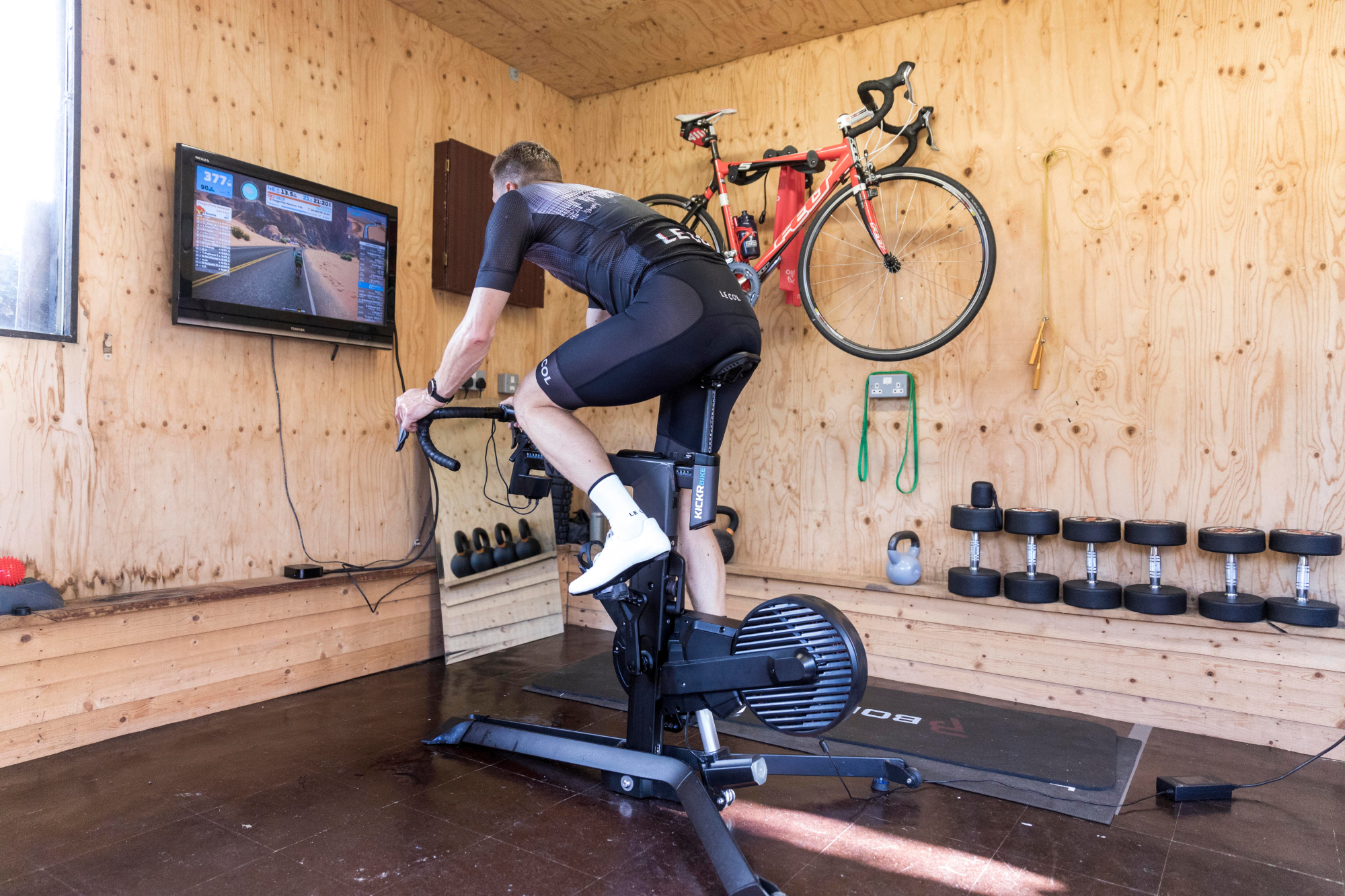
Thanks to the best indoor training apps for cycling it's so much easier to stay fit and ride out the winter inside on a turbo trainer or smart bike.
In need of riding inspiration this winter? Here are 16 ways to keep your motivation high while the temperatures are low

Thank you for reading 20 articles this month* Join now for unlimited access
Enjoy your first month for just £1 / $1 / €1
*Read 5 free articles per month without a subscription

Join now for unlimited access
Try first month for just £1 / $1 / €1

I’ve been hooked on bikes ever since the age of 12 and my first lap of the Hillingdon Cycle Circuit in the bright yellow kit of the Hillingdon Slipstreamers. For a time, my cycling life centred around racing road and track.
But that’s since broadened to include multiday two-wheeled, one-sleeping-bag adventures over whatever terrain I happen to meet - with a two-week bikepacking trip from Budapest into the mountains of Slovakia being just the latest.
I still enjoy lining up on a start line, though, racing the British Gravel Championships and finding myself on the podium at the enduro-style gravel event, Gritfest in 2022.
Height: 177cm
Weight: 60–63kg
-
 Man hands himself in to Belgian police after throwing full water bottle at Mathieu van der Poel during Paris-Roubaix
Man hands himself in to Belgian police after throwing full water bottle at Mathieu van der Poel during Paris-Roubaix30-year-old was on Templeuve-en-Pévèle cobbled sector when television pictures showed the bottle hitting him in the face
By Tom Thewlis Published
-
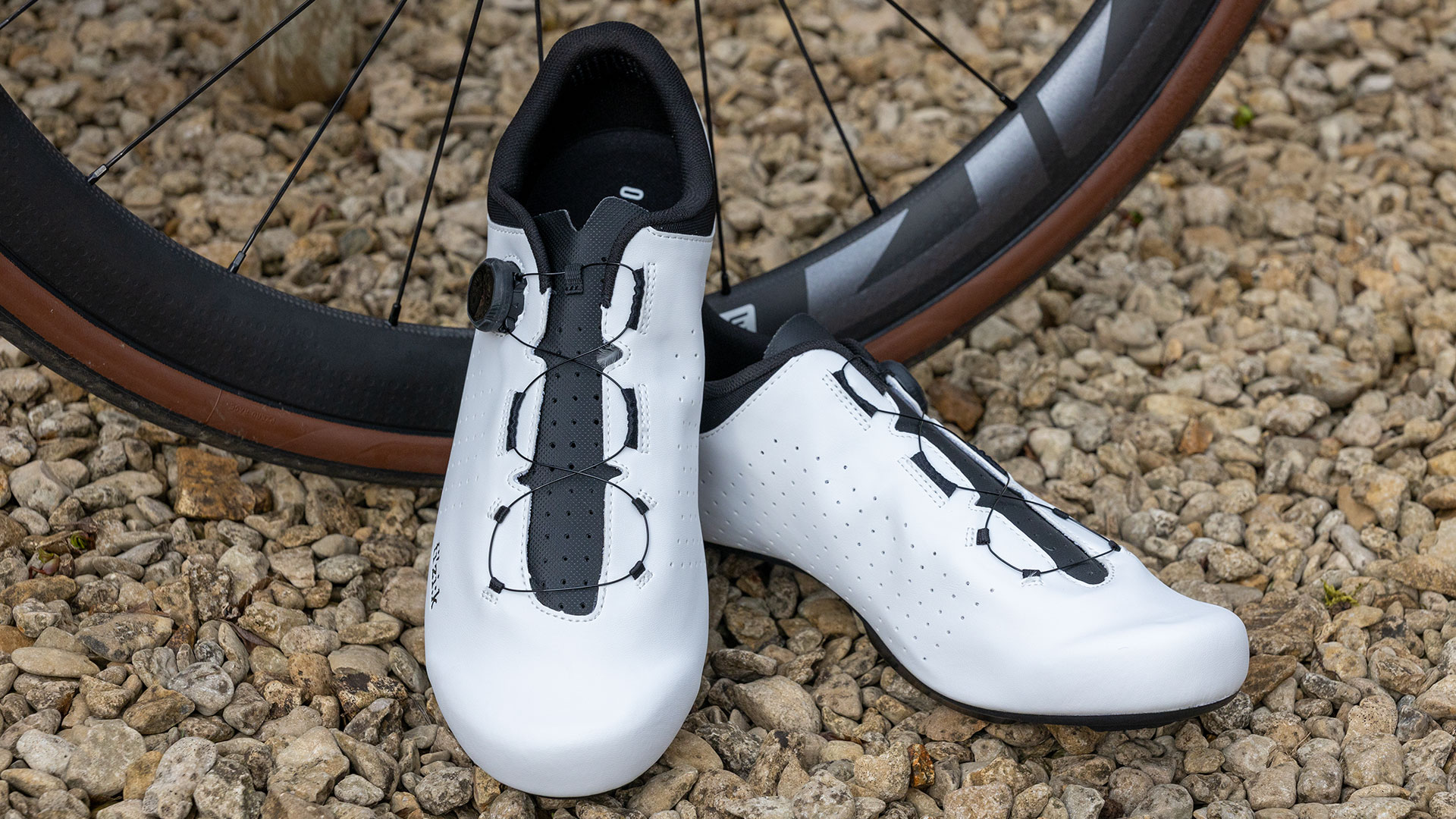 Fizik Vento Omna Wide shoe review: Yeti sneakers for those pedalling on a budget
Fizik Vento Omna Wide shoe review: Yeti sneakers for those pedalling on a budgetBroadly recommended for those of us with flipper feet
By Simon Fellows Published
-
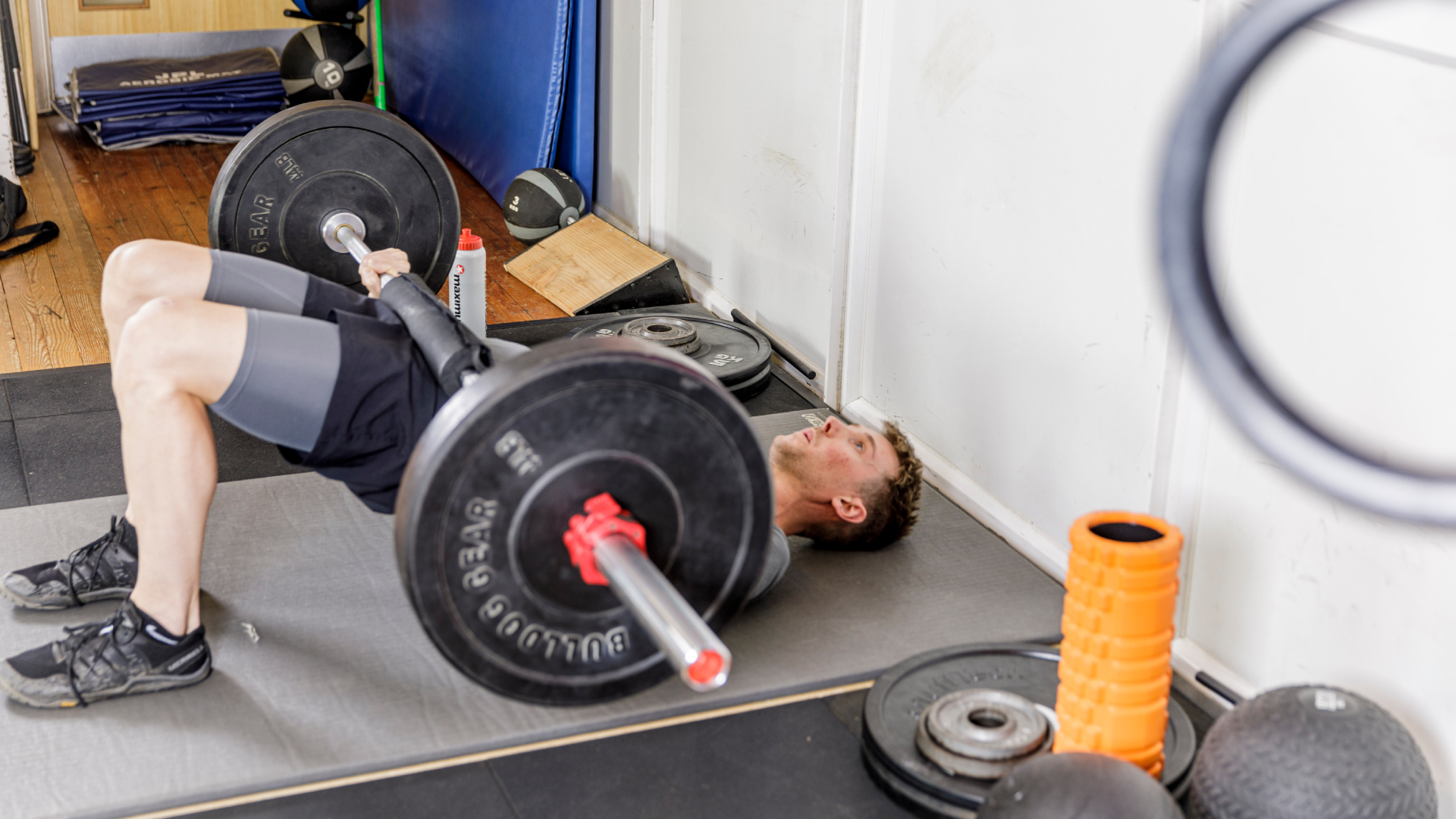 Does gym work really benefit your cycling fitness? Here’s how to mix up your training and reap the gains
Does gym work really benefit your cycling fitness? Here’s how to mix up your training and reap the gainsNo time for long winter miles outdoors but can’t face yet another turbo session either? Despair not! Coach Landry Bobo has an alternative winter plan to answer your prayers
By Landry Bobo Published
-
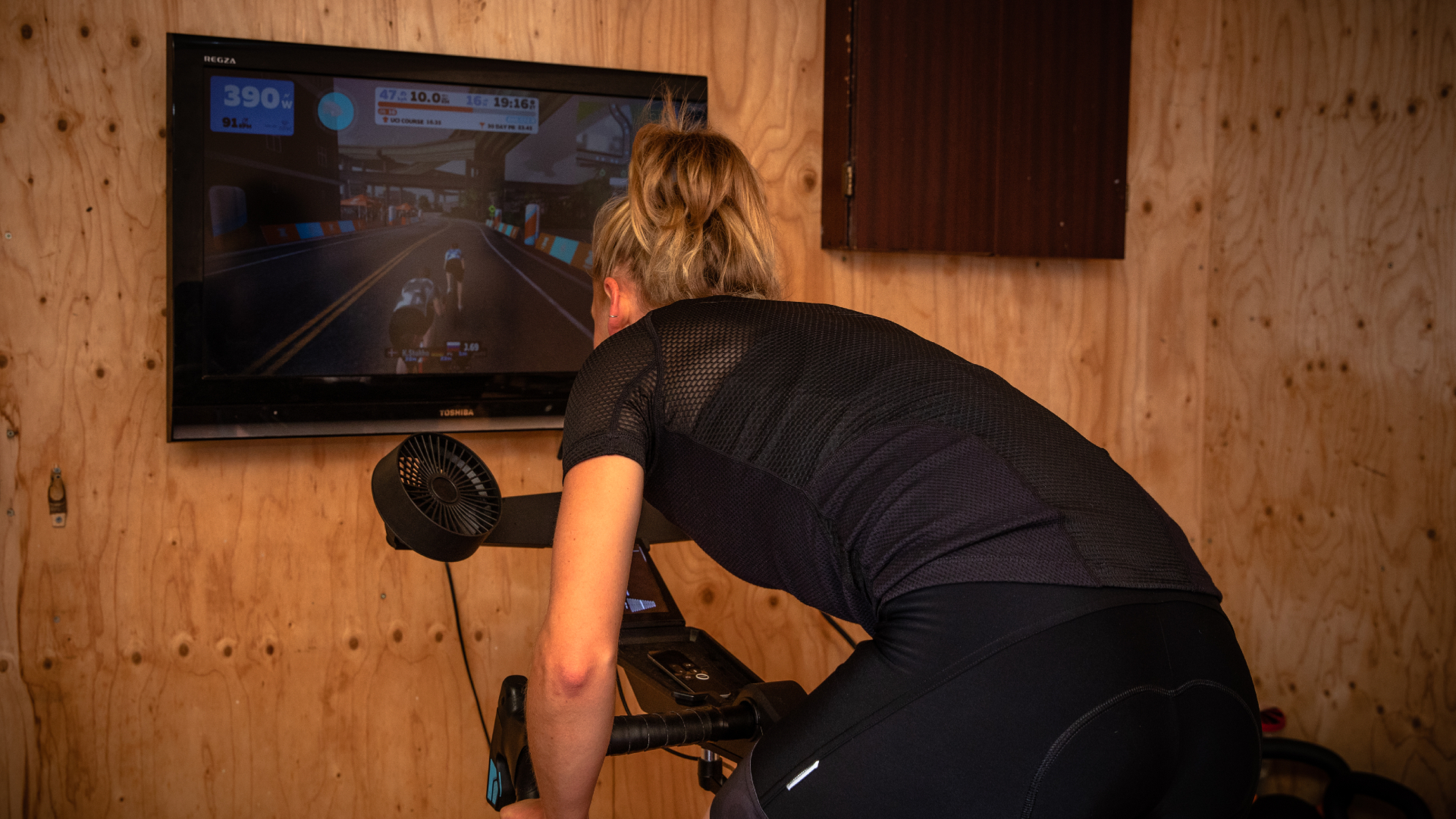 Nine of the best indoor cycling sessions: make the most of your time inside
Nine of the best indoor cycling sessions: make the most of your time insideHere's how to both enjoy indoor training and maximise your potential for your upcoming
By Anna Marie Abram Last updated
-
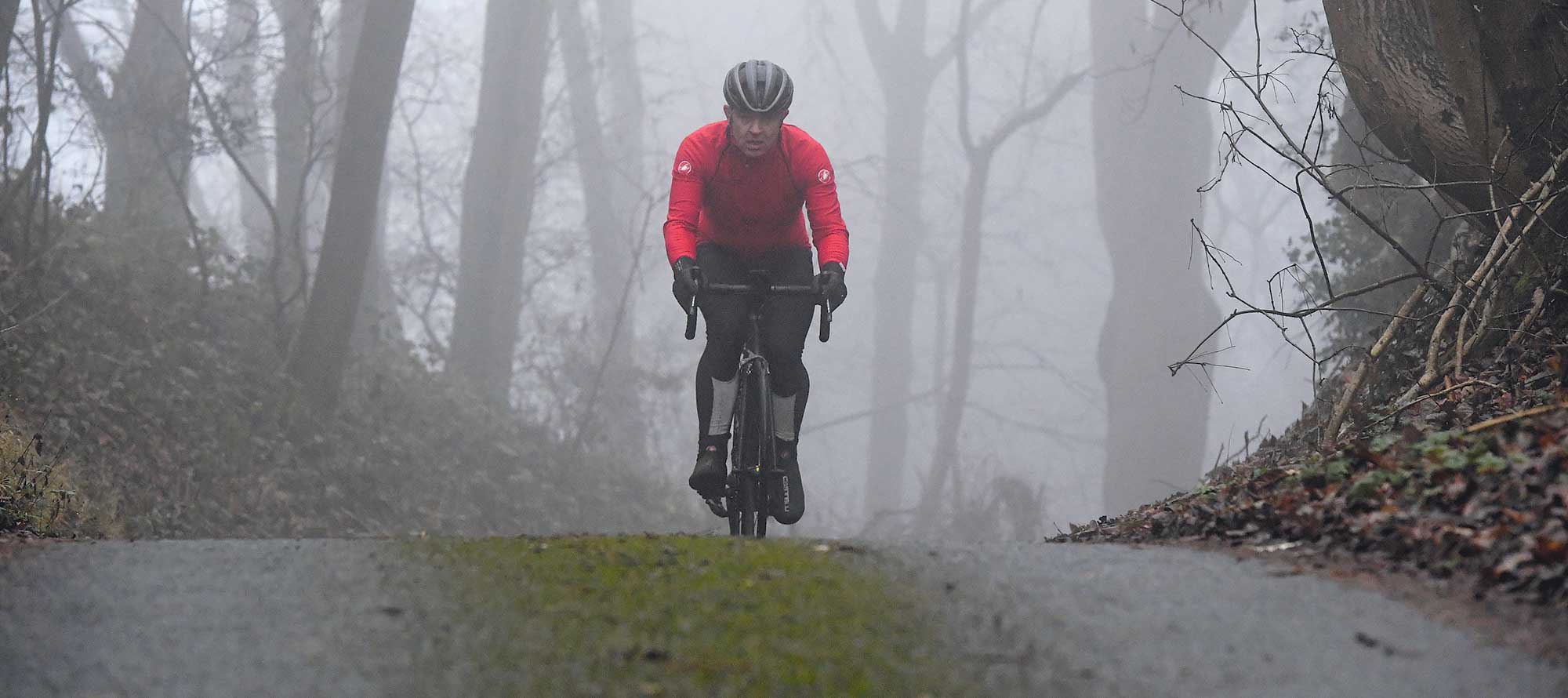 Cycling slower in winter? Six excuses for slow winter riding and the truth behind them
Cycling slower in winter? Six excuses for slow winter riding and the truth behind themDon't make excuses, make improvements to your winter cycling
By Simon Schofield Published
-
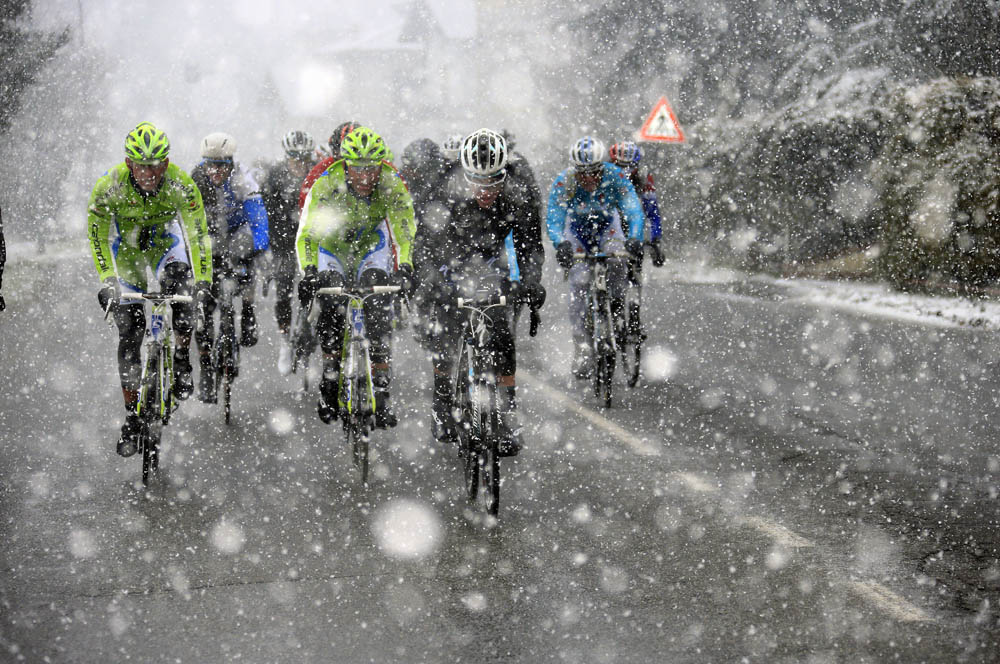 Pro rider tips for winter cycling
Pro rider tips for winter cyclingWinter has arrived for most people, so you might be tempted to pack away the bike and hibernate for the next six months. But these tips from winter-hardened pros prove you can keep on pedalling come what may
By Cycling Fitness Published
-
 How do YOU keep your winter fitness levels up? 17 reader tips
How do YOU keep your winter fitness levels up? 17 reader tipsCycling Weekly readers give their tips on how to stay motivated to ride through the colder months
By Nigel Wynn Published
-
 Winter blunderland: don't make these winter cycling mistakes
Winter blunderland: don't make these winter cycling mistakesBase mileage, keeping on top of your fitness and avoiding cold weather weight gain: winter training is critically important to the rest of the year — provided you navigate the snow-covered minefield of potential mistakes
By Michelle Arthurs-Brennan Published
-
 Six winter cycling exercises for strength and conditioning (video)
Six winter cycling exercises for strength and conditioning (video)Keep your core strong this winter
By Simon Schofield Published